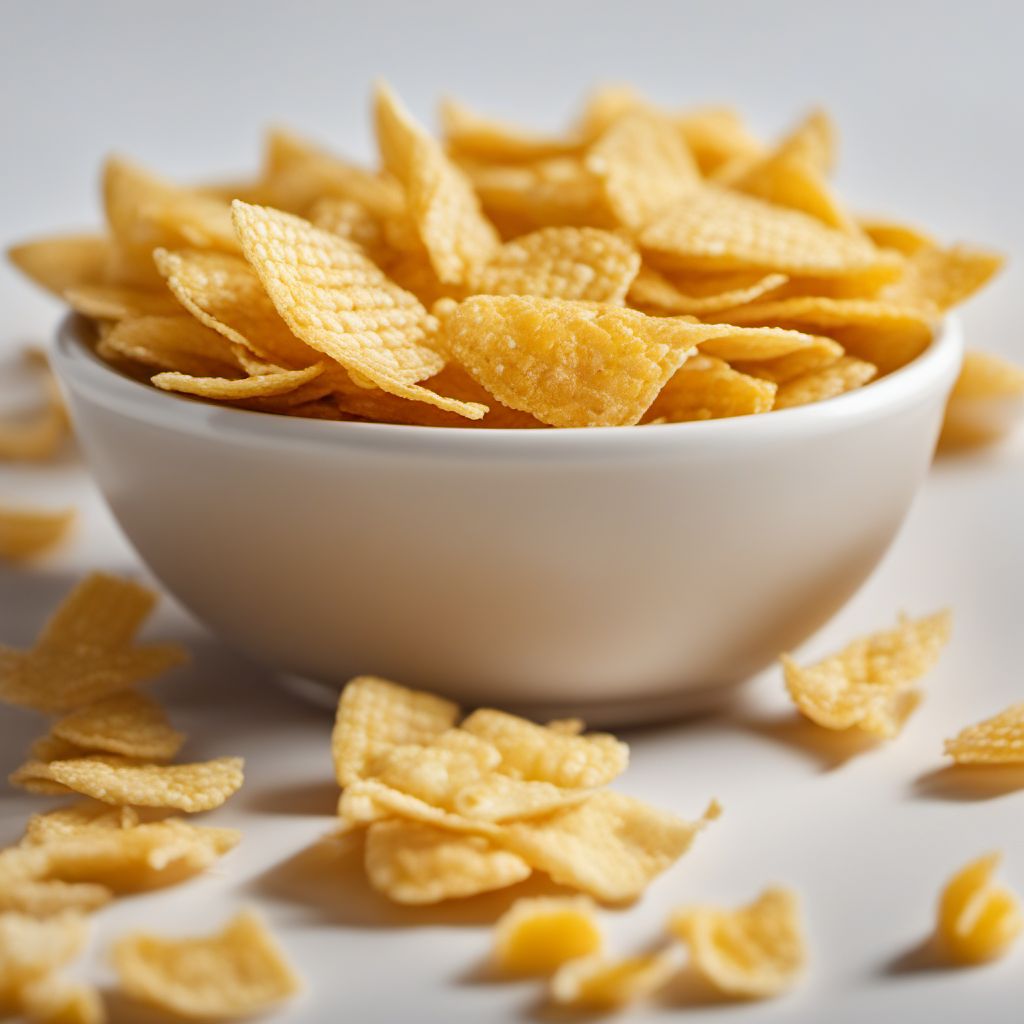
Ingredient
Corn chips
"Golden Crunch: Exploring the World of Corn Chips"
Corn chips are made from ground cornmeal, which is mixed with water, salt, and sometimes oil to form a dough. The dough is then shaped into thin, flat triangles or rounds and deep-fried until golden and crispy. The resulting chips have a satisfying crunch and a slightly salty taste. Their texture is firm yet brittle, making them perfect for dipping or enjoying on their own. Corn chips are often seasoned with various spices or flavors, such as chili, cheese, or lime, to enhance their taste.
Origins and history
Corn chips have their roots in Mexican cuisine, where they are known as "totopos." The ancient Aztecs and Mayans were the first to make corn chips by grinding corn kernels into a paste, which was then shaped and cooked. The popularity of corn chips spread throughout Central and North America, eventually reaching global recognition. In the early 20th century, a Mexican-American entrepreneur named Elmer Doolin discovered a recipe for corn chips during a trip to San Antonio, Texas. He later founded the Frito Company, which became one of the leading manufacturers of corn chips.
Nutritional information
Corn chips are a good source of carbohydrates and provide moderate amounts of fat. They are also relatively low in sugar. However, they can be high in sodium, so it's important to consume them in moderation.
Allergens
Corn chips may contain traces of gluten if they are produced in facilities that also process wheat products. Additionally, some flavored corn chips may contain dairy or other allergens, so it's essential to check the ingredient list for specific allergens.
How to select
When selecting corn chips, look for brands that use high-quality cornmeal and minimal additives. Check the ingredient list to ensure that the chips are made with whole corn and natural seasonings. Opt for chips that have a golden color and a crisp texture, avoiding any that appear stale or have a greasy feel.
Storage recommendations
To maintain the freshness and crispness of corn chips, store them in an airtight container or resealable bag. Keep them in a cool, dry place away from direct sunlight. Avoid exposing the chips to moisture, as it can cause them to become stale or lose their crunch.
How to produce
Amateur cooks can produce corn chips by mixing cornmeal, water, salt, and oil to form a dough. The dough can be rolled out and cut into desired shapes before being deep-fried until crispy. However, commercial production of corn chips involves specialized equipment and processes.
Preparation tips
Corn chips are a versatile ingredient that can be enjoyed in various ways. They are commonly used as a dipping vessel for salsas, guacamole, or cheese dips. They can also be crushed and used as a crunchy topping for salads, soups, or casseroles. For a twist, try baking corn chips with a sprinkle of spices to create a healthier alternative to the deep-fried version.
Substitutions
Tortilla chips or potato chips can be used as substitutes for corn chips in most recipes.
Culinary uses
Corn chips are a staple in Mexican cuisine and are often served alongside dishes like nachos, chilaquiles, or enchiladas. They are also popular as a snack on their own or paired with various dips and salsas.
Availability
Corn chips are widely available in grocery stores, supermarkets, and convenience stores worldwide.


